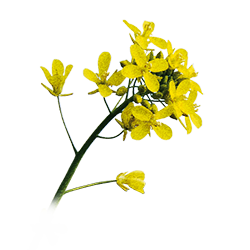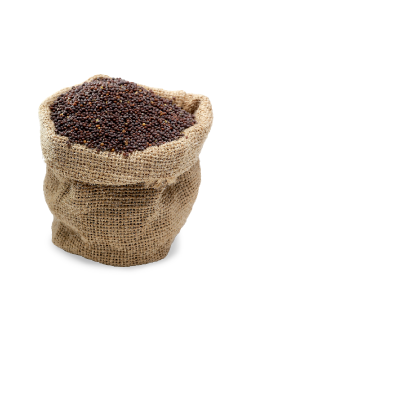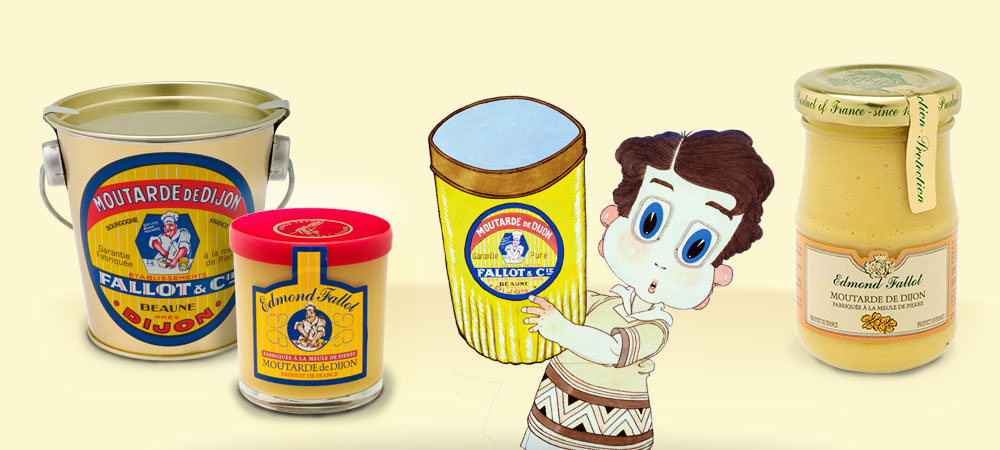- In ancient times
- In the middle ages
- As from the 17th Century
- From the Industrial Revolution to today

In the far distant past, the Chinese, Greeks and Romans were already transforming mustard seed (a yellow flowered plant) into a smooth and aromatic paste.
Even though the benefits gained by the Greeks and Romans from the medical usage of this plant were undeniable, it was also very rapidly introduced into the kitchen where, for its culinary role, it was combined with vinegar, already in use by these earlier civilisations, one of the important characteristics of vinegar being that it inhibited the plant's counter irritant properties.
Even though the benefits gained by the Greeks and Romans from the medical usage of this plant were undeniable, it was also very rapidly introduced into the kitchen where, for its culinary role, it was combined with vinegar, already in use by these earlier civilisations, one of the important characteristics of vinegar being that it inhibited the plant's counter irritant properties.

During the middle ages the words "mustard" and "sénevé" appeared simultaneously in 13th century French.
The word "moutardier", which described both the mustard maker and the mustard merchant appeared for the first time in the Paris Royal Tolls in 1292, and in 1351, a Decree was pronounced that gave the merchants the right to use weights.
Mustard was used for a long time, mainly among the poorer families to replace pepper, at that time a very expensive imported spice, in order to add flavour to their food. However, with the advent of the high period of great feasts and banquets, especially in the Renaissance epoch, little by little mustard began to find its way onto the tables of the more privileged classes: Rabelais incidentally being a case in point.
The word "moutardier", which described both the mustard maker and the mustard merchant appeared for the first time in the Paris Royal Tolls in 1292, and in 1351, a Decree was pronounced that gave the merchants the right to use weights.
Mustard was used for a long time, mainly among the poorer families to replace pepper, at that time a very expensive imported spice, in order to add flavour to their food. However, with the advent of the high period of great feasts and banquets, especially in the Renaissance epoch, little by little mustard began to find its way onto the tables of the more privileged classes: Rabelais incidentally being a case in point.

In the 17th Century the first smooth and aromatic mustards began to make an appearance and from this century onwards, the quality of mustard became a measure that was synonymous with riches, refinement and pleasure.
In the 18th and early 19th Centuries, manufacturers rivalled each other to create a thousand new recipes.
In the 18th and early 19th Centuries, manufacturers rivalled each other to create a thousand new recipes.

When the industrial revolution first made its appearance in France around 1850, the manufacturing process of mustard (milling, grinding ,sieving) which up to then had always been done by hand, became mechanised.
In the 20th Century the regulations governing manufacture became increasingly rigorous: as a result a 1937 Decree, (which was to be finalised and brought up to date in July 2000) defined the manufacturing conditions and types of mustards.
Today, the craftsman methods of manufacturing mustard have almost totally disappeared. Only a few rare manufacturers, amongst which the FALLOT MUSTARD MILL is proud to be numbered, still use traditional stone milling methods which retain all of the paste's gustatory qualities, and give our mustards their incomparable taste and flavour.
In the 20th Century the regulations governing manufacture became increasingly rigorous: as a result a 1937 Decree, (which was to be finalised and brought up to date in July 2000) defined the manufacturing conditions and types of mustards.
Today, the craftsman methods of manufacturing mustard have almost totally disappeared. Only a few rare manufacturers, amongst which the FALLOT MUSTARD MILL is proud to be numbered, still use traditional stone milling methods which retain all of the paste's gustatory qualities, and give our mustards their incomparable taste and flavour.















